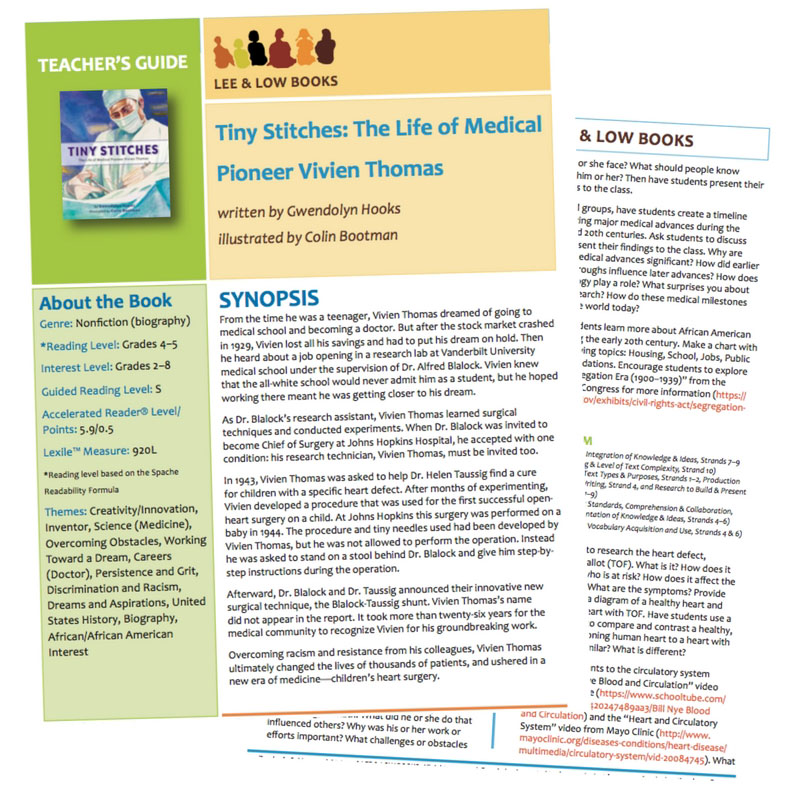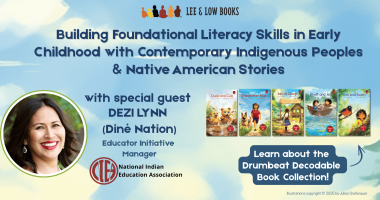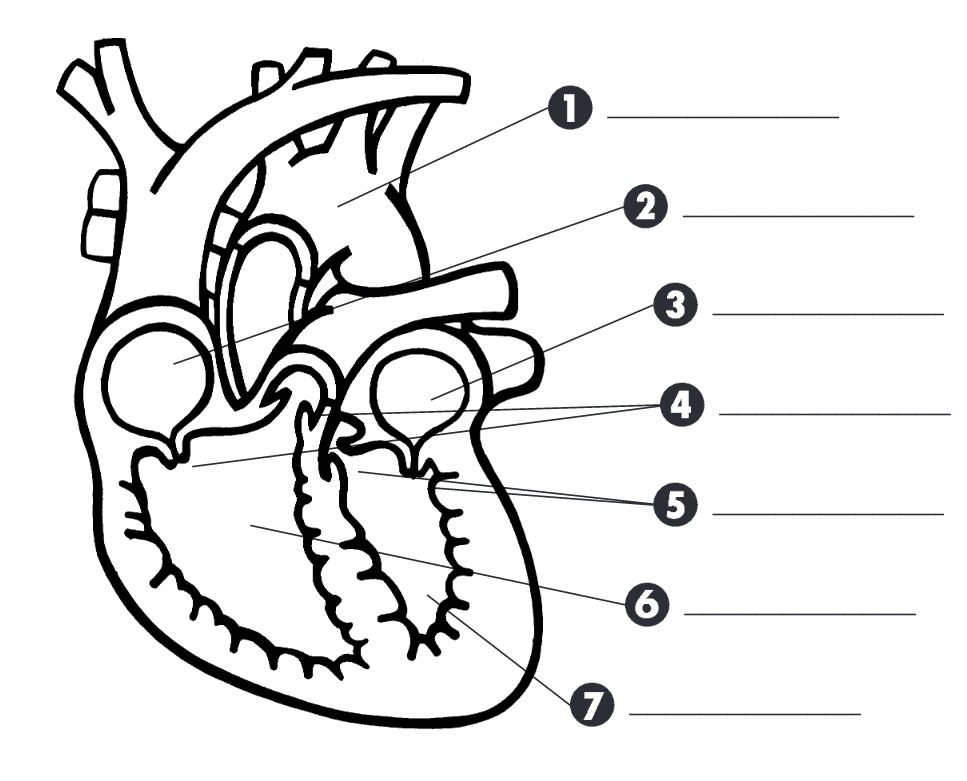Help your students become scientists like medical pioneer Vivien 
Thomas and explore the mysteries of the human heart with the
FREE Tiny Stitches Teacher’s Guide.
Background information
From the time he was a teenager, Vivien Thomas dreamed of going to medical school and becoming a doctor. But after the stock market crashed in 1929, Vivien lost all his savings and had to put his dream on hold. Then he heard about a job opening in a research lab at Vanderbilt University medical school under the supervision of Dr. Alfred Blalock. When Dr. Blalock was invited to become Chief of Surgery at Johns Hopkins Hospital, he accepted with one condition: his research technician, Vivien Thomas, must be invited too.
In 1943, Vivien Thomas was asked to help Dr. Helen Taussig find a cure for children with a specific congenital heart defect known as Tetralogy of Fallot, or Blue Baby syndrome. After months of experimenting, Vivien developed a procedure that was used for the first successful open-heart surgery on a child. Afterward, Dr. Blalock and Dr. Taussig announced their innovative new surgical technique, the Blalock-Taussig shunt. Vivien Thomas’s name did not appear in the report. It took more than twenty-six years for the medical community to recognize Vivien for his groundbreaking work.
Awards and honors for Tiny Stitches:
- Eureka! Honor Award (Silver), California Reading Association
- Top Ten Science and Health Books for Youth, Booklist
- Lasting Connection Title, Book Links
- NAACP Image Award Nominee, NAACP
Content themes and subjects covered:
- Circulatory system
- Human heart
- Medical advances
- The Great Depression
- Discrimination and prejudice
- African American pioneers
Here’s a preview of the types of lesson questions and activities you can find in the Tiny Stitches Teacher’s Guide:
Science/STEM
- Introduce students to the circulatory system with the “Bill Nye Blood and Circulation” video from SchoolTube and the “Heart and Circulatory System” video from Mayo Clinic. What structures make up the circulatory system? What is the function of the heart? What parts make up the heart? How does the heart pump blood throughout the human body? What does blood carry to different parts of the body? What is oxygen and why is it
important?
- Have students identify and label the different parts of the human heart using the Label the Heart’s Parts worksheet from the American Heart Association. Then ask students to define and represent the function of each part of the heart in a separate chart or graphic organizer. What does each part of the heart do? Why is it important?
- Have students calculate their maximum heart rate and observethe relationship between heart rate and physical activity with the Heart Zone Math Lesson Plan from the American Heart Association. How does heart rate, or beats per minute, change with different levels of physical activity? Why does the heart rate increase? Why does it decrease? Of what does the body need more or less?
English Language Arts and Social Studies
- Encourage students to write a diary from the perspective of Vivien Thomas. Students should include multiple dates and passages as Vivien chronicles his feelings about working for Dr. Blalock as a surgical technician, moving from Vanderbilt University to John Hopkins, segregation and discrimination, and his dream of studying medicine. How does Vivien feel about his job title and salary? His research and role in developing the Blalock-Taussig shunt? The lack of recognition he receives?
- Ask students to write a letter to Vivien Thomas from the perspective of Dr. Blalock. If Dr. Blalock were still alive today, what would he say to Vivien? How does he feel about their work and research? How does he feel about Vivien Thomas’s surgical skills? Does Dr. Blalock have any regrets? Why or why not? If possible, what would he have changed and why?
- In a chart, have students list and define the following terms: stocks, bonds, stockbroker, stock market, profit, loss, shareholder, investor, and interest. Then have students explore the economics of the stock market with the “Wall Street for Beginners and Virtual Investing” activities from The Crash of 1929 Teacher’s Guide from PBS.org
- Ask students to investigate other African American scientists or researchers and their contributions in health, math, and the sciences. How do these advances affect or influence people today? Explore the “Partners of the Heart-African American Medial Pioneers” resource from PBS.org for more information.
Download the FREE Teacher’s Guide here.
You can purchase a copy of Tiny Stitches on our website here.
 Veronica has a degree from Mount Saint Mary College and joined LEE & LOW in the fall of 2014. She has a background in education and holds a New York State childhood education (1-6) and students with disabilities (1-6) certification. When she’s not wandering around New York City, you can find her hiking or hanging out with her dog Milo in her hometown in the Hudson Valley, NY.
Veronica has a degree from Mount Saint Mary College and joined LEE & LOW in the fall of 2014. She has a background in education and holds a New York State childhood education (1-6) and students with disabilities (1-6) certification. When she’s not wandering around New York City, you can find her hiking or hanging out with her dog Milo in her hometown in the Hudson Valley, NY.









